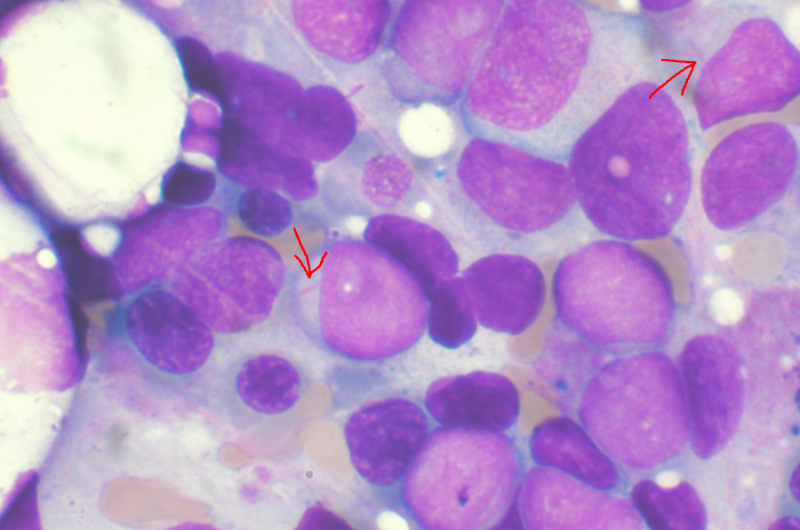
Scientists at St. Jude Children’s Research Hospital have a new understanding of how a group of well-known fusion oncoproteins causes leukemia. The findings show the importance of liquid-liquid phase separation (LLPS), a process cells use to organize proteins and other molecules. LLPS is a key part of the mechanism driven by NUP98 fusion oncoproteins that transforms blood stem cells into leukemia. A paper on the work was published today in Cancer Discovery, a journal of the American Association for Cancer Research.
Genetic abnormalities called fusions link two genes to each other, leading to the creation of fusion oncoproteins. Fusion oncoproteins made in part by the gene NUP98 are a hallmark of a subset of high-risk pediatric leukemias. All NUP98 fusion oncoproteins have an intrinsically disordered region (IDR). These are regions of proteins that lack structure and are often prone to undergoing LLPS.
LLPS helps cells organize proteins and other molecules without containing them within a membrane. LLPS can go awry, leading to diseases such as cancer. However, demonstrating the role of LLPS in leukemia caused by NUP98 fusions and tracking the exact mechanism is challenging because these states are difficult to study inside cells. To better understand this process, researchers at St. Jude combined their expertise in biophysics, cellular assays, sophisticated imaging analyses, leukemia models and transcriptomics.
“We’ve demonstrated that the NUP98 family of fusion oncoproteins help transform blood stem cells by undergoing phase separation and thereby driving a gene expression program that leads to leukemia,” said co-corresponding author Richard Kriwacki, Ph.D., St. Jude Department of Structural Biology. “This work underscores the importance of understanding how phase separation is involved in cancer development and highlights how this biophysical process may present an opportunity for therapeutic development in these high-risk leukemias.”
LLPS is key for leukemia development
The researchers studied a product of LLPS called biomolecular condensates. These condensates are droplets in a cell that are not bound by a membrane but are held together by biophysical forces. The condensates contain proteins and nucleic acids and can be visualized using fluorescence microscopy. It was known that NUP98 fusion oncoproteins form condensates. However, it was unknown how those condensates form, or whether condensate formation is important to generate leukemia.
Using multiple complementary approaches, the scientists showed that two types of interactions are involved in condensate formation: Homotypic and heterotypic. Homotypic interactions involve the NUP98 IDR, whereas heterotypic interactions are driven by the other fusion partner, which can bind to DNA or chromatin.
By making mutations in the fusion oncoprotein NUP98-HOXA9, the researchers altered the strength of those interactions and the properties of LLPS. This finding translated into the ability to “tune” the formation of NUP98 fusion oncoprotein condensates inside cells. The researchers showed that altering the strength of those interactions resulted in corresponding effects on gene expression and leukemic transformation.
The study also showed that three additional leukemia-associated NUP98 fusion oncoproteins (NUP98-PRRX1, NUP98-KDM5A and NUP98-LNP1) form condensates and transform blood stem cells leading to cancer development. Additional evidence outside this study suggests that the role of phase separation in cancer development is not limited to the NUP98 family, and likely extends to other fusion oncoproteins.
Source: Read Full Article
